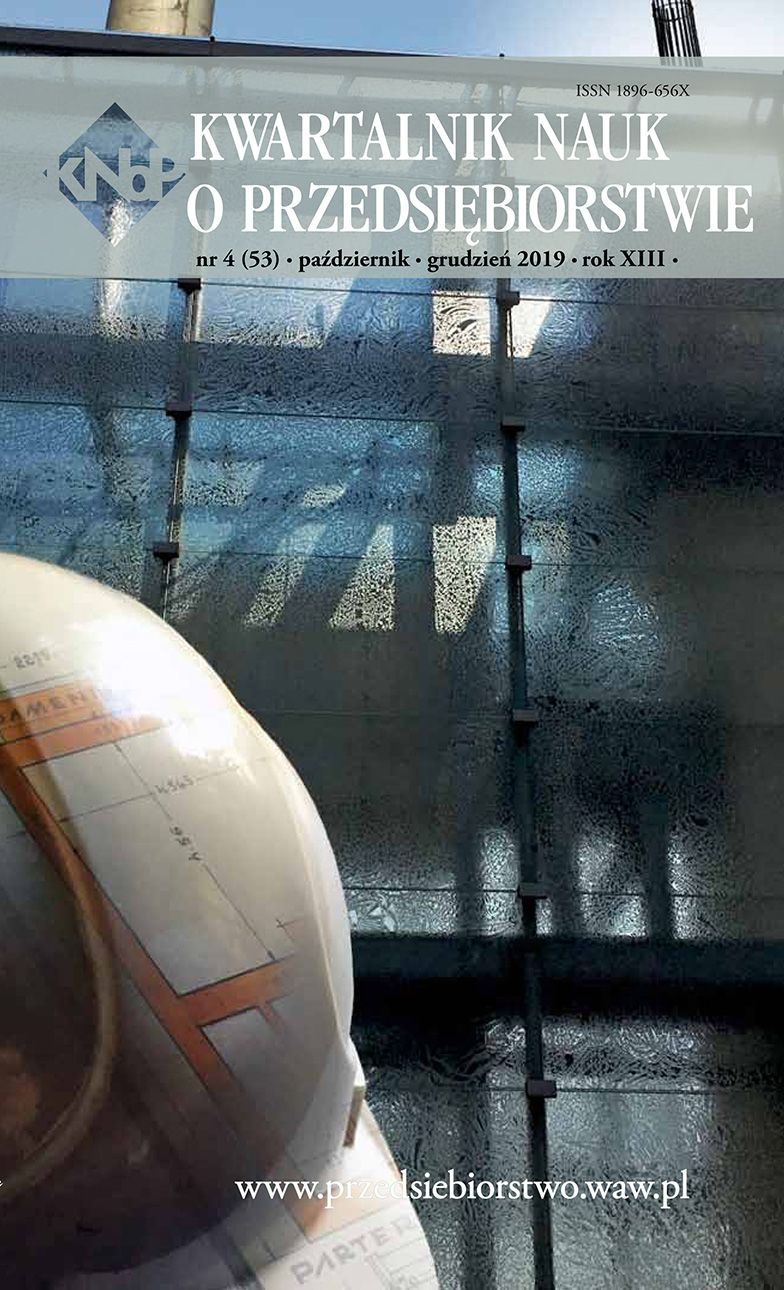Conflict: tradition versus modernity on the example of food
Main Article Content
Abstract
The aim of the article is to analyze the mutual relations of tradition and modernity (novelty). The confrontation of these two categories often leads to conflicts of values and past arrangements with those oriented towards the future. The manifestations and consequences of this conflict are visible in the area of politics, society, culture and the economy. The article analyzes the nature of the conflict between ‘tradition’ and ‘modernity’ in the food sector. It emphasizes the different nature, intensity of the course and the main stakeholders of the conflict in this area in relation to other sectors of the economy.
Downloads
Article Details
The author of the article declares that the submitted article does not infringe the copyrights of third parties. The author agrees to subject the article to the review procedure and to make editorial changes. The author transfers, free of charge, to SGH Publishing House the author's economic rights to the work in the fields of exploitation listed in the Article 50 of the Act of 4 February 1994 on Copyright and Related Rights – provided that the work has been accepted for publication and published.
SGH Publishing House holds economic copyrights to all content of the journal. Placing the text of the article in a repository, on the author's home page or on any other page is allowed as long as it does not involve obtaining economic benefits, and the text will be provided with source information (including the title, year, number and internet address of the journal).
References
Alhasani N. M. (1996), Tradition vs. Modernity: The Quest for a Cultural Identity, “Traditional Dwellings and Settlements Review”, Vol. 7, No. 2 (SPRING), p. 35.
Chinsinga B. (2009), The Interface between Tradition and Modernity, “Civilisations”, 01 April.
Galland O., Lemel Y., (2008), Tradition vs. Modernity:The Continuing Dichotomy of Values in European Society, “Revue française de sociologie”, Vol. 49, s. 153.
Grebitus C., (2008), Food Quality from the Consumer’s Perspective: An Empirical Analysis of Perceived Pork Quality, Cuvillier Verlag, Göttingen, Germany, p. 15.
Guerrero L., Guardia M., Xicola J., Verbeke W., Vanhonacker F., Zakowska S., Sajdakowska M., Sulmont-Rosse´ C., Issanchou S., Contel M., Scalvedi L., Granli B. and Hersleth M. (2009),
Consumer-driven definition of TFP and innovation in traditional foods. A qualitative cross-cultural study, “Appetite”, Vol. 52.
Gusfield J.R. (1967), Tradition and Modernity: Misplased Polatities in the Study of Social Change, „American Journal of Sociology”, Vol. 72, Issue 4, January.
IJHARS (2016), Wyniki kontroli przeprowadzonych przez Inspekcję Jakości Handlowej Artykułów Rolno- Spożywczych w I kwartale 2016 r., http://www.ijhars.gov.pl/pliki/2016/wyniki_kontroli_IJHARS_I_0kw_2016.pdf, 15.10.2019.
Konwencja Związkowa Paryska z dnia 20 marca 1883 roku o ochronie własności przemysłowej, przejrzana w Brukseli dnia 14 grudnia 1900 roku, w Waszyngtonie dnia 2 czerwca 1911 roku i w Hadze dnia 6 listopada 1925 roku (ratyfikowana zgodnie z ustawą z dnia 17 marca 1931 roku [Dz.U. 1932, nr 2, poz. 8].
Kowalczyk S. (2018), Żywność konwencjonalna versus żywność wysokiej jakości, w: Zrównoważone systemy żywnościowe, Z badań nad rolnictwem społecznie zrównoważonym, Kwasek M. (red), seria „Monografie Programu Wieloletniego”, nr 83, IERiGŻ-PIB, Warszawa, s. 46.
Kuchnia.wp.pl, (2014), Ile substancji rakotwórczych siedzi w wędzonym mięsie? 21 styczeń, https://kuchnia.wp.pl, 15.10.2019.
Levine K. (2008), Lab-Grown Meat a Reality, But Who Will Eat It? “NPR Health”, May 20.
Lisbon Agreement (1958) for the Protection of Appellations of Origin and their International Registration of October 31, 1958, as revised at Stockholm on July 14, 1967, and as amended on September 28, 1979, http://www.wipo.int/lisbon/en/legal_texts/lisbon_agreement.html.
Modernity vs. Tradition (2012), “Fuzzytheory”, WorldPress, October 4, 09.10.2019.
Polska Izba Produktu Regionalnego i Lokalnego, Warunki uzyskania znaku, http://www.produktyregionalne.pl/jakosc.php?body=article&name=warunki-uzyskania-znaku&lang=pl, 15.10.2019.
Rand A. (2013), Kapitalizm, nieznany ideał, Zysk i Spółka Wydawnictwo, Poznań, s. 318-319.
Rostow W.W. (1959), The Stages of Economic Growth, “The Economic History Review”, New Series, Vol. 12, No. 1 (1959).
Rozporządzenie Rady (EWG) nr 2081/92 z dnia 14 lipca 1992 r. w sprawie ochrony oznaczeń geograficznych i nazw pochodzenia produktów rolnych i środków spożywczych (Dz. Urz. WE z 24.07.1992 r., L 208/1).
Rozporządzenie Parlamentu Europejskiego i Rady (UE) nr 1151/2012 z dnia 21 listopada 2012 r. w sprawie systemów jakości produktów rolnych i środków spożywczych (Dz. U. L 343 z 14.12.2012).
Siedlecka E. (2008), Wędliny szkodliwe jak papierosy? „Wyborcza.pl”. http://info.wyborcza.pl, 15.10.2019.
Steenkamp J-B. E.M. (1986), Perceived Quality of Food Products and its Relationship to Consumer Preferences: Theory And Measurement, „Journal of Food Quality”, December, Vol. 9, s. 374. https://onlinelibrary.wiley.com/doi/abs/10.1111/j.1745-4557.1986.tb00807.x.
Styl.pl (2015), Wędzone niezdrowe? „Styl.pl”, 20 sierpnia, https://www.styl.pl, 15.10.2019.

